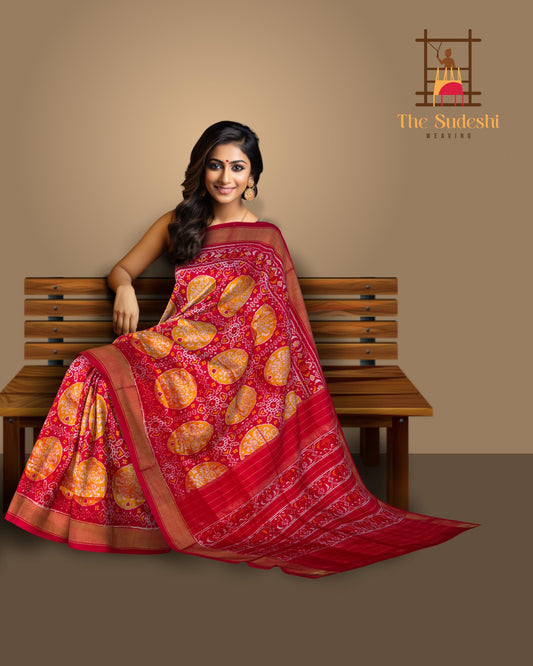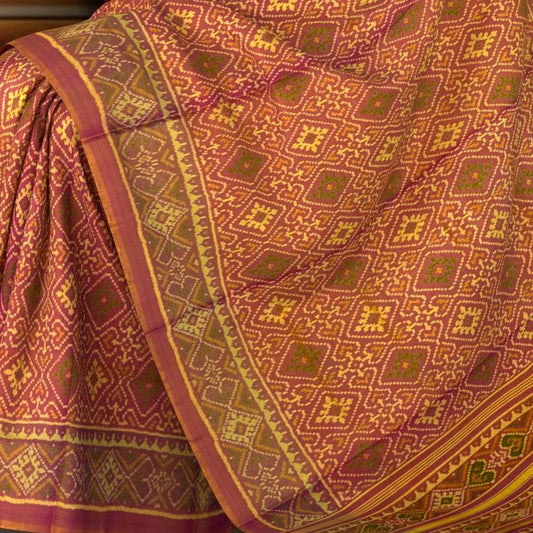Handlooms and Their Significance in Indian Culture
India's rich cultural heritage is woven into the threads of its handloom industry. Handlooms have been an integral part of Indian society for centuries, symbolizing tradition, craftsmanship, and a way of life that reflects the country’s diversity. In an era of mass production, handlooms represent the enduring spirit of craftsmanship, artistry, and sustainability. This blog explores the significance of handlooms in India, their deep-rooted history, the diverse types of fabrics they produce, and the role they play in the country's socio-economic fabric.
The Historical Legacy of Handlooms in India
Handloom weaving in India has a rich and ancient history, dating back more than 5,000 years. Archaeological evidence from the Indus Valley Civilization reveals that early Indians were well-versed in weaving techniques. The tradition continued to flourish, and Indian handwoven textiles became highly sought after globally during ancient trade routes like the Silk Road.
During the Mughal era, handloom weaving received royal patronage, with intricate and luxurious fabrics like brocades, jamdani, and pashmina shawls gaining prominence. Each region developed its own distinctive weaving style, blending local influences and materials. From Gujarat's Patola to West Bengal's Baluchari, India's handloom heritage is a tapestry of regional identities.
The Diverse World of Indian Handlooms
India's diversity is vividly reflected in its handloom products, with each region offering unique textiles and techniques. Here's a look at some iconic handloom varieties from different parts of the country:
1. Banarasi Silk (Uttar Pradesh)
Known for its intricate motifs, gold and silver zari work, and delicate texture, Banarasi silk sarees are famous worldwide. These sarees are often worn at weddings and formal occasions, symbolizing opulence and tradition.
2. Kanjivaram Silk (Tamil Nadu)
Hailing from Tamil Nadu, Kanjivaram sarees are renowned for their vibrant colors, lustrous texture, and traditional temple designs. These sarees are considered among the finest silks in India, and they often carry motifs inspired by nature and Hindu mythology.
3. Pochampally Ikat (Telangana)
The intricate tie-dye process used in Pochampally Ikat weaving creates geometric patterns that are both timeless and modern. Pochampally weavers skillfully dye individual yarns before weaving them into striking designs, producing sarees, dupattas, and fabric pieces known for their vibrancy.
4. Chanderi (Madhya Pradesh)
The Chanderi fabric combines silk and cotton threads to create a lightweight, sheer fabric with a distinctive shine. Traditionally adorned with floral motifs, peacocks, and geometric designs, Chanderi is synonymous with elegance and grace.
5. Phulkari (Punjab)
Phulkari, meaning "flower work," is a traditional handloom art from Punjab. Characterized by floral embroidery done on handwoven fabric, Phulkari shawls and dupattas are treasured for their vibrant colors and intricate detailing.
The Socio-Economic Importance of Handlooms
The handloom sector in India provides livelihood to millions of artisans, especially in rural areas. According to the Ministry of Textiles, around 4.3 million people are employed in the handloom industry, making it the second-largest source of employment in the rural sector after agriculture.
Empowering Women
A significant portion of the handloom workforce comprises women, who often work from home, balancing household responsibilities and their craft. The sector empowers these women by offering them financial independence, allowing them to contribute to their family's income.
Sustainable and Eco-Friendly
In today’s world of fast fashion and environmentally harmful production practices, handlooms stand out as a sustainable alternative. The entire process is eco-friendly, as it relies on manual labor, natural fibers like cotton, silk, and wool, and often uses organic dyes. With growing global awareness of environmental concerns, the demand for handloom products has seen a resurgence, making them not only a cultural asset but also a green choice for consumers.
Preserving Heritage and Tradition
Handloom weaving is not just about creating textiles; it’s about preserving cultural heritage. Many of the skills passed down through generations are at risk of being lost due to modern industrialization. However, continued interest and patronage of handlooms help ensure that these age-old traditions remain alive. Initiatives like the National Handloom Day and government schemes such as the Handloom Mark Scheme aim to promote the rich legacy of Indian handlooms.
Challenges Faced by the Handloom Sector
Despite its significance, the Indian handloom industry faces numerous challenges that threaten its survival in the modern age.
Competition from Power Looms
The rise of machine-made textiles has posed a significant threat to handloom weavers, offering cheaper and faster production options. While handlooms produce unique and high-quality products, they often struggle to compete with the low costs and mass availability of power loom fabrics.
Lack of Infrastructure and Market Access
Many handloom weavers work in rural areas with limited access to modern infrastructure, technology, and financial resources. Additionally, they often face difficulties in reaching broader markets due to middlemen, inadequate marketing, and limited e-commerce adoption.
Decline in Skilled Artisans
As younger generations migrate to urban areas in search of better-paying jobs, the pool of skilled handloom weavers is dwindling. The profession, seen as labor-intensive and less lucrative, is no longer attracting younger artisans, putting traditional weaving techniques at risk.
Government Initiatives to Support Handlooms
Recognizing the importance of the handloom sector, the Indian government has introduced several initiatives to support weavers and promote their craft.
National Handloom Development Program (NHDP)
The NHDP provides financial assistance to handloom clusters for technology upgradation, market promotion, and infrastructure development. It also helps artisans gain access to credit and training programs.
Handloom Mark Scheme
Launched in 2006, the Handloom Mark is a certification that assures customers of the authenticity of handloom products. This mark helps weavers differentiate their handcrafted goods from machine-made products and gain consumer trust.
E-Commerce Integration
In recent years, e-commerce platforms like Amazon and Flipkart have partnered with the Ministry of Textiles to provide handloom artisans with an online marketplace. This digital integration enables weavers to sell their products directly to customers, bypassing middlemen and expanding their market reach.
The Revival of Handlooms: A Modern Perspective
Despite the challenges, the handloom industry is witnessing a revival in the fashion world. Designers are increasingly incorporating handwoven fabrics into contemporary collections, blending traditional crafts with modern aesthetics. Celebrities and influencers are also playing a role in promoting handlooms, wearing handwoven sarees and outfits on public platforms.
The sustainable fashion movement has also contributed to the growing demand for handlooms, as environmentally conscious consumers seek out handmade, eco-friendly products. With a renewed focus on ethical fashion, handloom products are being recognized for their beauty, craftsmanship, and environmental benefits.
Conclusion
Handlooms are not just textiles; they are a representation of India’s cultural heritage, artistry, and sustainability. From the ancient days of the Indus Valley Civilization to the modern era, handlooms have played an integral role in shaping India's identity. Today, as the world moves towards sustainable and eco-friendly choices, Indian handlooms offer a perfect blend of tradition and modernity. By supporting this industry, we not only preserve an age-old craft but also empower millions of artisans who weave the story of India into every thread.
In the modern era, handlooms are more than a symbol of tradition – they represent India’s future, where craftsmanship and sustainability go hand in hand.







Leave a comment
Please note, comments need to be approved before they are published.